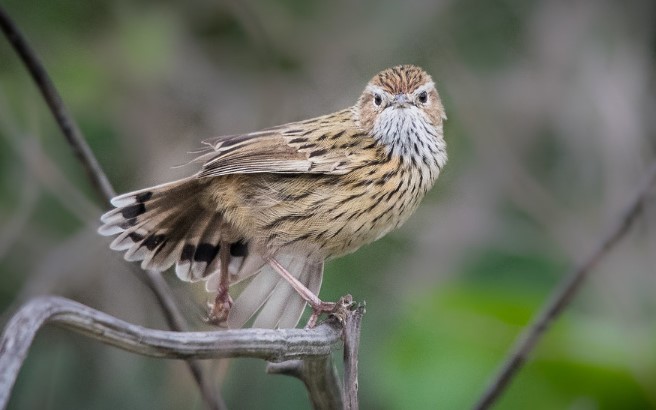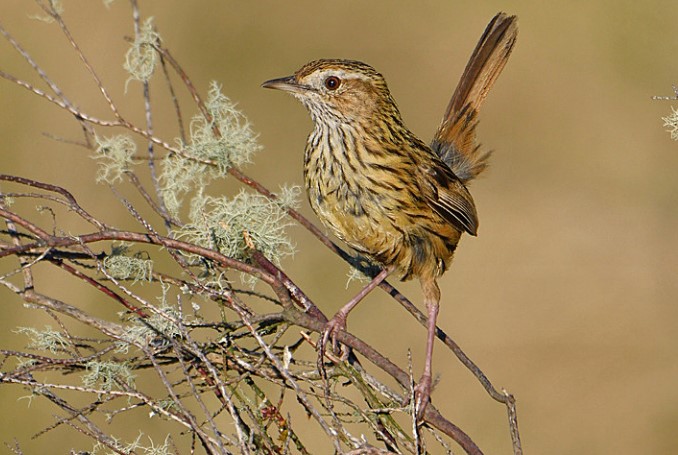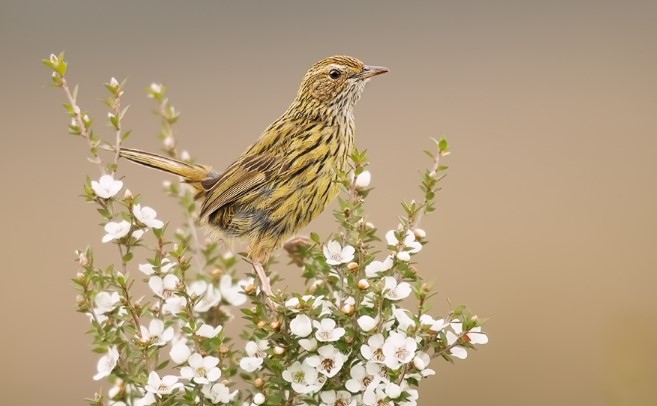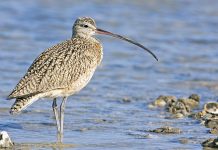Family: Known as the Striated fieldwren (Calamanthus fuliginosus), it is a species of bird native to Australia that belongs to the family Acanthizidae.
Behavior and Habitats: Around southeastern coastal Australia, the striated fieldwren replace the Rufous Calamanthus in swampy heaths and tussock fields. Despite being larger and tawnier, with a wedge-shaped bill, it is a bird that lives on the ground and under shrubbery. Since it is sedentary and keeps to the same territory year-round with its young, established pairs of the bird may stay on the same territory of several hectares after breeding.
Rather than hopping together, they work through the undergrowth and over the ground like rodents, picking up insects and seeds as they go. In the event of flushing, they flutter in a low, direct dash for cover; more often, they hop to a bush’s top to investigate any disturbance. As they forage in dense vegetation and on the ground, striated field wrens can be difficult to spot.
When approached, the birds raise their tails and sometimes move sideways, while continuing their song until they feel trapped. After that, they will fly away and move on. The male bird sings tail cocked and flicking this way and that, in a territorial advertisement from such vantage perches. After breeding, the birds become silent but intermittently sing throughout the day. Apparently, quail dogs are distracted by the odor of these birds, which is why they were once known as stinkbirds.

Alternative Names: Striated Fieldwrens are also known as White-lored Fieldwrens, Fieldlarks, Mock Quail, and Stinkbirds.
Size: Striated Fieldwrens measure 135-140 mm in length.
Identification: The upper parts of the male are tawny-olive with a rufous wash on the forehead; the tail has a black subterminal band and dull gray tip. There are black streaks along the brow, lores, and throat. The rest of the underparts are pale tawny, streaked with black. A reddish-brown color dominates the eyes. The bill is wedge-shaped and has a dusky horn, with a paler underside. Dark flesh-gray is the color of the feet. In females, the brow is buff, and the lores and throat are tawny, as in males. Immature: As female; more heavily marked.

Sounds and Songs: Fieldwrens sing during the springtime when they perch up in vegetation. Birds have a unique sound that can be described as strong and whirring, like the sound of a song. Due to the fact that they usually sing from the top of bushes, they are sometimes confused with other species of birds. The striated fieldwren calls softly, in contact; generally silent. There is a short period of time when the “sweet little strain” cannot be heard in the winter and spring months. While they chirp less outside of breeding season than during the breeding season, the striated field wren’s songs can be heard throughout the entire year in different variations. striated fieldwren sings a trilled and chirruped warble, chip-chip, followed after pausing by chik-chik-whirr-reee, the last syllable rising, repeated intermittently in bursts of 20 or more seconds.
Nest and Breeds: Nesting and breeding occur between August and December. This nest is a compact dome with a small side entrance, made of coarse grasses and fibers; lined with finer grasses, feathers, and down; and hidden under dense bush growth or tussock.
Eggs: Three to four eggs; pale chocolate to purple-brown, faintly speckled, and shaded dark at the large end; oval, around 23 x 16 mm.
Distribution: The striated fieldwren is found in coastal swamp heaths and tussock fields in the southeastern mainland, from New South Wales to South Australia and Tasmania. Three races exist. Increasing land clearance and degradation have left the striated field wren’s habitat vulnerable. National parks and reserves usually record their presence as a result of habitat intervention. Read More – Speckled Warbler (Sericornis sagittatus)







